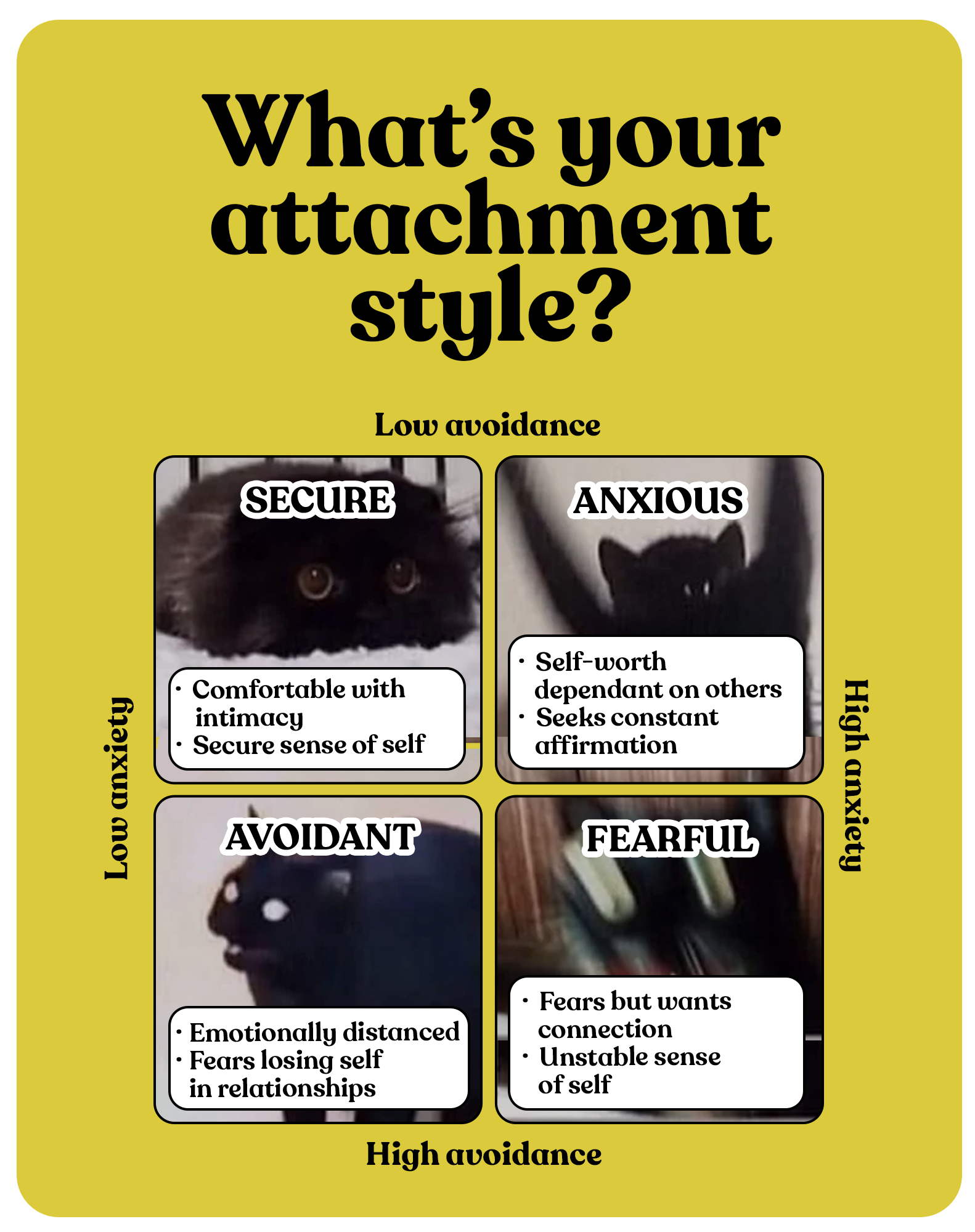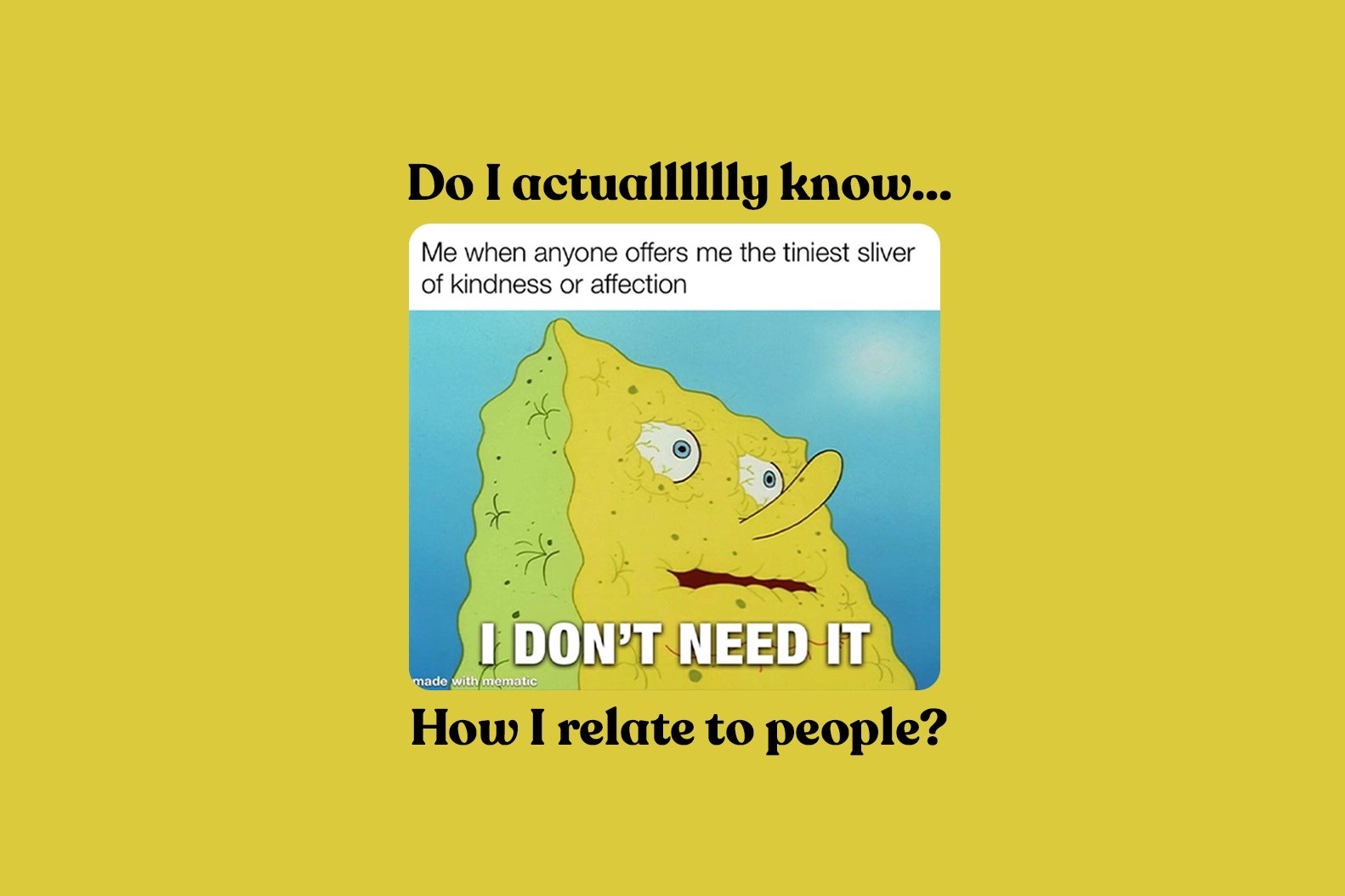Adulting is hard and maintaining relationships is even harder. That was what I realised as I journeyed from singlehood to marriage and now parenthood.
I often wondered, which relationships are worth keeping? Are relationship complexities due to a season of life or the sum of my personality and background?
So when attachment styles became a trending topic (with 840 million views on TikTok and counting), I decided to dig for some answers by speaking to two experts for their insights on this relationship theory.
- Abigail Lee, President of the Association of Christian Counsellors (Singapore) and Executive Director of Healing Hearts Centre
- Pamela Koh, Founder & Clinical Director of ThriveSG
The theory of attachment was originally developed by John Bowlby, a British psychoanalyst in the late 1950s, who was attempting to understand the intense distress experienced by infants who had been separated from their parents.
The central theme revolves around the availability and attentiveness of the primary caregivers to the infant’s physical and emotional needs. When these needs are met, the child will develop a sense of security and learn that the parent is dependable. This creates a safe, stable and secure base for the child to explore the world.
The idea that our parents and childhood experiences shape our emotional life is hardly new. If our parents were sensitive and responsive to our needs, we will likely have a positive view of relationships. If they were not, are we more likely to develop insecure attachments? Are we doomed? That’s what I hoped to find out.
What are attachment styles?
In a nutshell, attachment styles are divided into two categories, secure and insecure.
Insecure attachment is further divided into three dominant groups which are anxious, avoidant and fearful avoidant/disorganised.

Here are the main characteristics of the four attachment styles, which is taken from Koh’s Instagram page.
- Secure: you have a positive view of self, comfortable with closeness, able to trust others
- Anxious: you may struggle with fear of abandonment, values closeness and intimacy, gets easily triggered in relationships
- Avoidant: you fear intimacy and getting close to others, values independence, have trust issues
- Fearful Avoidant/Disorganised: you may swing between fear of abandonment and fear of intimacy, inconsistent in relationships, difficulty in expressing emotions
According to Koh, this topic is gaining more traction possibly because there’s greater awareness of mental health among young people these days. Like it or not, the quality of our relationships will affect our mental and emotional well-being.
How accurate are they in describing our relationships?
The word attachment seems to rub me in the wrong way. Who wants to be seen as too “attached” or dependent on anybody? It just connotes a type of neediness that I won’t like labelled on me (maybe this is the “avoidant” me speaking!).
But Bowlby defined attachment as an emotional bond with another person. He believed that the earliest bonds formed by children with their parents have a tremendous impact that continues throughout life. He concluded that this relational connection between parent and child will later become a template for future relationships in life.
Based on Koh’s experience in counselling, she found that while relationships with significant caregivers do shape how we relate to others, factors such as adverse life experience — such as a divorce or death of loved one — can also alter the child’s sense of identity and worldview of relationships.
Lee added that other factors such as temperament, personality and biological makeup also have an effect on how people behave and respond in relationships. As a counsellor, she feels the attachment style can be used as a framework to give us an idea of a person’s well-being.
In terms of interactions, if a person has a secure attachment, he/she might be able to maintain eye contact, hold conversations and be comfortable in the presence of another. There is a correlation (not causation) where healthy relationships and interactions impact a person’s well-being.
Does it dictate how we relate to God?
There are loads of attachment style quizzes on the internet if we are unsure of which category we belong to. But I was also curious to find out whether our attachment styles influence the way we relate to God.
Koh gave an example where this might be possible: a critical and demanding parent may cause a child to be in constant anxiety and fear. Unconsciously, the child may grow to project the image of that parent on God. They might perceive that God’s always not pleased with them if they don’t pray, serve or read the Bible enough.
Pitfalls
Koh then cautioned us of some pitfalls in putting all our eggs into this attachment basket. If we use the attachment lens to interact with others, we must be careful not to be too quick to judge them without understanding the person.
I totally agree with her. I must admit the four styles present a rather rigid and simplified way of classifying how people relate. Humans are complex, intricate and cannot be entirely defined in an attachment style.
Koh then raised an example of a counselee who is very high-functioning at work, able to relate well with her colleagues and draws boundaries clearly.
But when it comes to her relationship with her boyfriend, she becomes very insecure. She is fearful of rejection and gets distressed when her boyfriend doesn’t reply her messages instantly. Note that attachment styles tend to show up in our significant relationships but not in all relationships.

Another pitfall is to assume that our attachment styles can’t change throughout our lifetime.
Lee highlighted that an attachment style should not become our identity. When we slap reductive labels on ourselves and others, it may produce unhelpful behaviours such as to put blame on our past and evading the responsibility for change.
“Our past does not have to determine our future. We should not be limited by our attachment styles,” she said.
Plumb line
Attachment styles are a new trend and allow for a new way to see our world, but how do they measure up against God’s Word? Lee advised us to use His truth as a plumb line: are these philosophies and values centred upon Scripture?
In the Old Testament, a plumb line symbolised one’s alignment according to God’s view and standard — one is either leaning towards God or not. Today, God’s words and laws in the Bible serve as a guiding line for our lives and is the line against which our lives are to be measured.
Lee continued, saying that if we were to encounter a popular theory that tells us that we don’t need to depend on anybody and all you need to do is just believe in yourself, then we need to question, how does that line up with what God says and His character?
Such a popular theory seems to be devoid of God and of any emphasis on relationships with people in His community.
Read up on different worldviews and weigh them wisely. Attend Bible studies or courses on Christology, i.e. the study of Christ, His character, life and works because these may serve to align your plumb line better.
Lee encouraged pastors and leaders in church to journey together with young people who may be genuinely seeking for answers. It could be frustrating for them if leaders shun certain topics or immediately conclude that every philosophical worldview is ungodly without much critical investigation. Instead, leaders should commit to explore the answers together from God’s Word.
3 ways to change and heal
More importantly, there is hope, resounded both Lee and Koh. If we find ourselves having insecure attachments, fret not. All is not doom and gloom.
Lee reminded us that we can experience change and transformation because of the process of sanctification.
Koh also shared that research in neuroscience informs us that our adult brains are still capable of rewiring due to the amazing plasticity that God has created in us biologically.
She added that believers have life-changing resources in our hands and hearts — the Word of God and the Holy Spirit.
We can renew our mind by meditating on His Word. In Galatians 5:22-23, the Holy Spirit helps us to produce the fruit of the Spirit and we can choose love, joy and peace even if we are struggling with insecure attachments.
Scripture points us to hope in Jesus (Romans 15:13), therefore we can change (2 Corinthians 5:17) and relate to God in a new way.
1. Start with awareness
Change begins with an awareness of who we are, said Lee. Are we that safe and secure base for someone else?
If we find ourselves feeling insecure, look out for the cause. Are we burnt out? Have we overextended ourselves?

Learn to set boundaries. Setting boundaries is not about closing ourselves or shutting everybody out. “If my anxiety is jacked up because I’m inclined to answer every call for help, then I need to learn to say no,” she says.
Koh added that we can also learn to take ownership of our own growth: “Just because I have an anxious attachment style doesn’t mean that I have to live with this for the rest of my life. If I take ownership and choose to grow, I can move towards being a more securely attached person.”
2. Pray for godly mentors
Insecure attachments can also be changed when we establish good and healthy relationships, said Koh.
“If my parents were unable to make me feel secure when I was young, there is still hope. A school teacher, a cell group leader or a coach could significantly influence me such that I may not necessarily develop an insecure attachment,” she encouraged.
God in His mercy and grace can bring about mentors, leaders and pastors in our growing years to help us mature securely.
3. Love yourself
“Sadly, some of us do not have a very good relationship with ourselves. In fact, we hate ourselves. We show very little care and compassion to ourselves,” Koh said.
She added that when we are not comfortable with our own feelings, or when we have reservations about sharing how we feel, we may find ourselves repressing our interactions even with God.
“Be vulnerable with God about your feelings. It not only helps you to heal but takes you into a deeper relationship with God,” she encouraged.
Forgiveness is also a key, added Lee. Maybe our caregivers have hurt or abandoned us in the past and we have developed a deep-seated resentment. Forgiving ourselves and those who have hurt us will help us break the chains of bitterness.
There is no shame in getting professional help like confiding in a counsellor, pastor or even a trusted friend to accompany you in this journey of healing.
Hope and healing are available
So thankfully, we are not doomed. Though we cannot change what has happened in the past, let us hold on to Isaiah 61:1-2 — our Heavenly Father is the Great Healer of every kind of hurt and trauma that we may have experienced over our lifetime.
In Koh’s words, “He alone is able to heal all our attachment injuries.” I attest to that. Experience has proven that even my spouse can’t meet all, let alone heal my emotional needs.
When we learn to draw from God to meet our emotional needs, that will help us to relate with others securely. Ultimately, God alone should be our source of secure attachment. No one else will be able to play that role perfectly.
And the best news is, He never abandons us.









